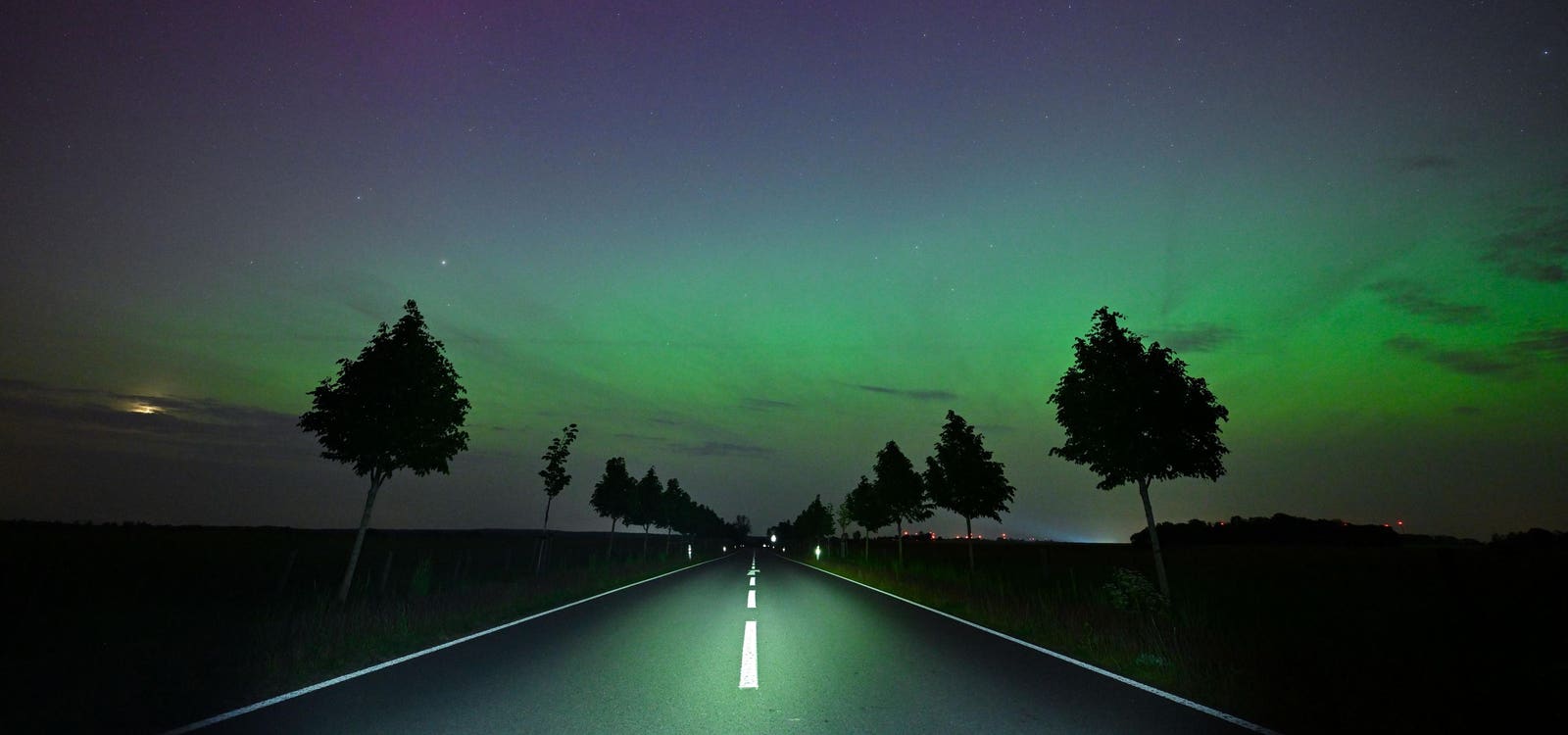May 10, 2024, Brandenburg, Falkenhagen: Light green and light reddish auroras glow in the night … [+]
The dazzling display of aurora on May 10 and 11 was one of the strongest ever recorded in the past 500 years, according to a NASA statement.
In another claim of record status, the British Geological Survey claimed that Britain’s aurora show was the result of the most extreme and long-lasting geomagnetic storm recorded in the past 155 years.
And there’s a chance it will happen again.
“We will be studying this event for years,” said Teresa Nieves-Chinchilla, acting director of NASA’s Moon to Mars Space Weather Analysis Office. “It will help us test the limits of our models and our understanding of solar storms.” The space agency added that they were “possibly one of the strongest auroral phenomena in the past 500 years.”
Simultaneous attacks
The solar superstorm on May 10/11 caused northern Lights (Northern Lights) to be visible as far south as Florida in the Northern Hemisphere, while the aurora australis (southern lights) appeared as far north as New Zealand.
NASA first detected the beginnings of a solar storm on May 7, when two solar flares were found. As many as seven went off over the next four days, all aimed at coronal mass ejections (clouds of charged particles) towards Earth. They traveled at different speeds and arrived at the same time.
“The CMEs all arrived largely at the same time, and the conditions were just right to create a truly historic storm,” said Elizabeth MacDonald, chief of NASA heliophysics citizen science and a space scientist at NASA’s Goddard Space Flight Center in Greenbelt, Maryland.
Biggest since 2003
According to the BGS, the May geomagnetic storm – caused by a series of consecutive solar flares and the CMEs that follow – shares characteristics with some of the largest storms since 1869, with the most recent being the 2003 Halloween geomagnetic storm. Daily geomagnetic activity is registered since 1869, the report said.
Aurora is the result of the solar wind in space (charged particles from the Sun) being accelerated along the field lines of the Earth’s magnetic field.
The Earth’s geomagnetic field is compared using measurements of the horizontal magnetic field intensity, which at Lerwick in the Sheland Islands, Scotland, typically measures around 30-50 nanoTesla (nT) m, according to the BGS. On the evening of May 10, they peaked at 800 nT.
Return of Aurora?
The sunspot that caused the outbursts and CMEs, called AR13364, is currently pointed toward Venus, which produced a massive X12 solar flare on May 20. That was the most powerful of the current solar cycle. As the sun orbits Earth, AR13364 is expected to still be active, prompting warnings of potentially more powerful geomagnetic storms.
A new article published in Nature states that more powerful geomagnetic storms are expected over the next two years as the sun moves toward “solar maximum,” a peak in its magnetic activity that occurs once every 11 years.
I wish you clear skies and big eyes.
